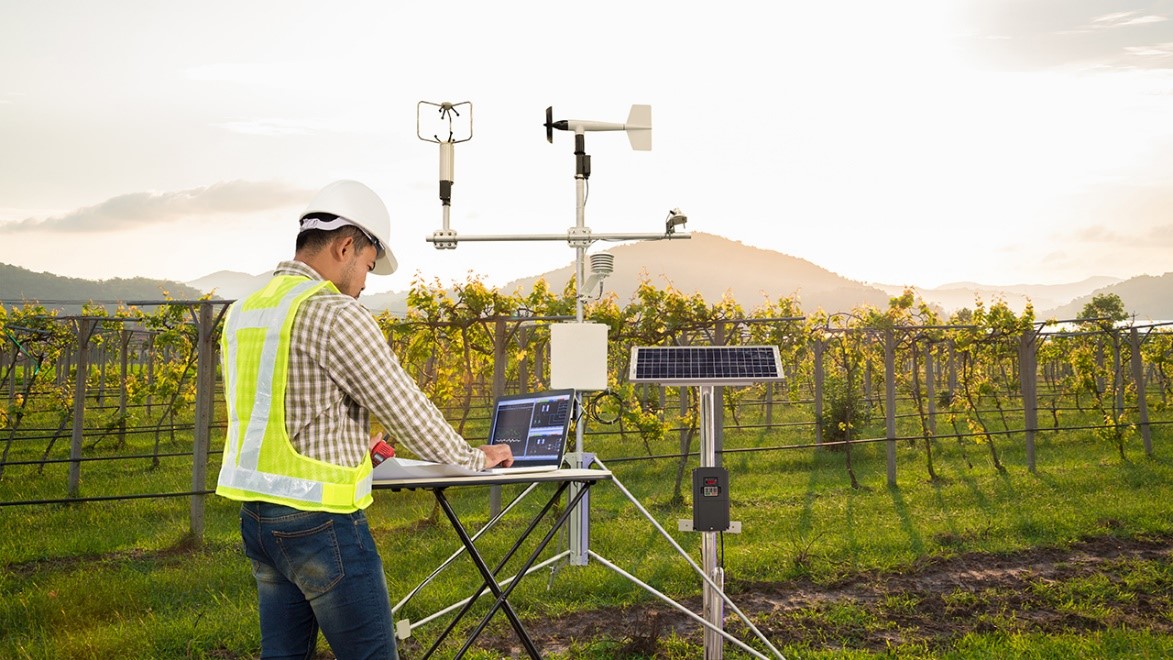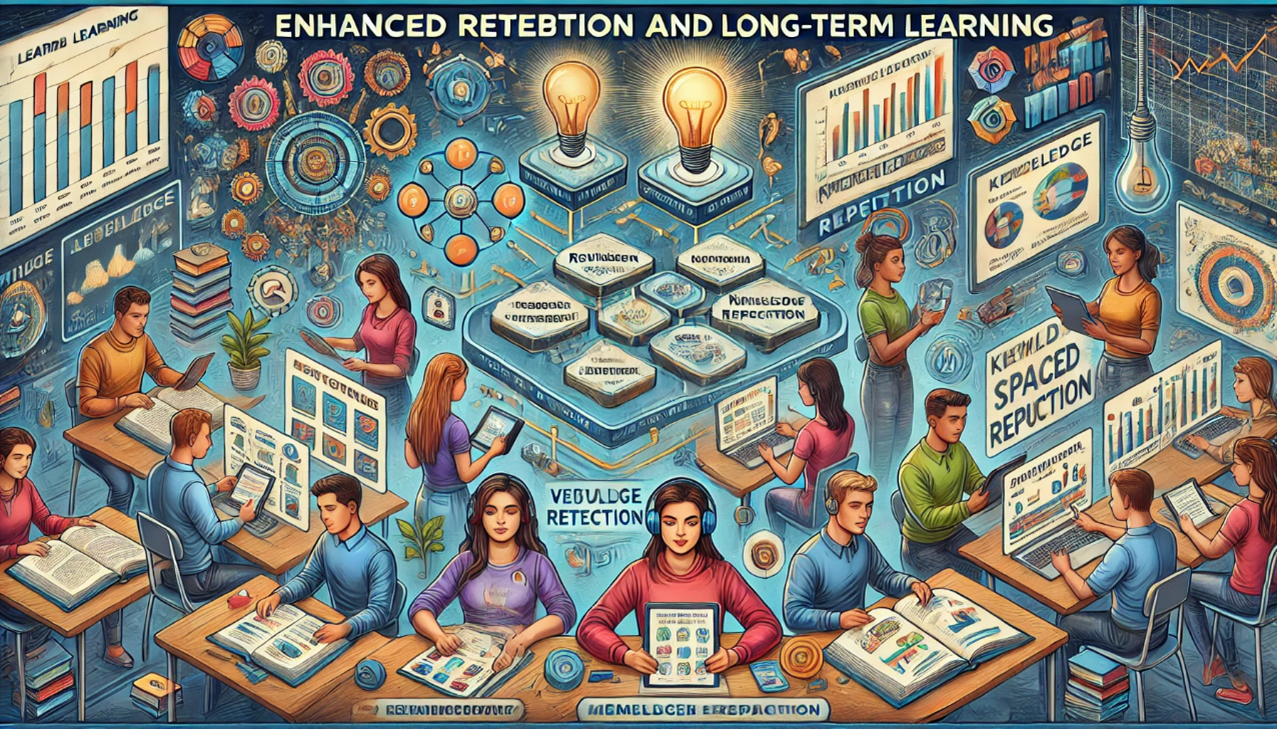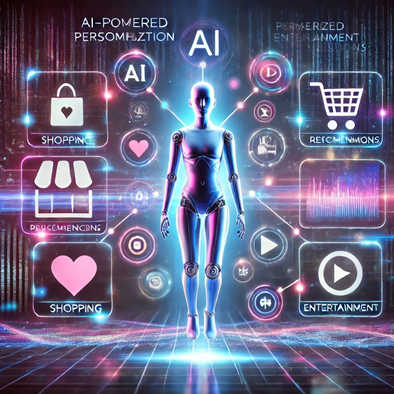How tech innovation is paving the way for academic opportunities in gaming

How tech innovation is paving the way for academic opportunities in gaming
by Nathaniel 02:56pm Jan 23, 2025
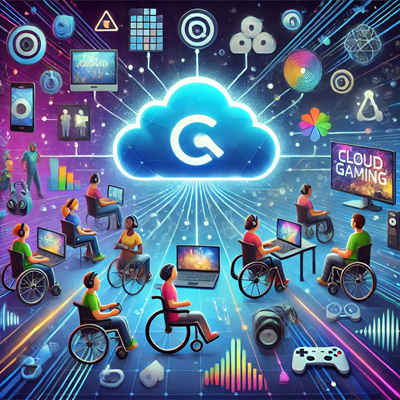
How tech innovation is paving the way for academic opportunities in gaming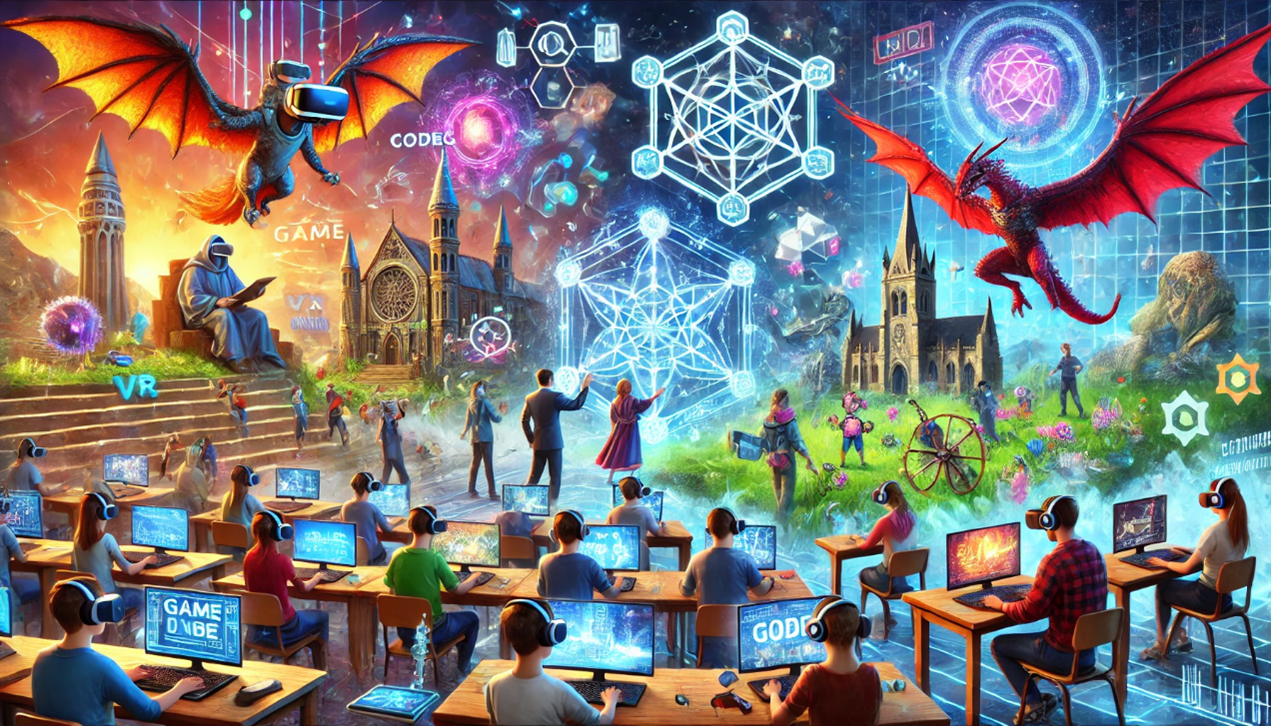
Technology innovation is significantly reshaping the academic landscape of gaming, opening new opportunities for students, educators, and institutions to explore gaming from a variety of angles. The combination of cutting-edge technologies, such as artificial intelligence (AI), virtual reality (VR), augmented reality (AR), and cloud gaming, along with a growing recognition of gaming's potential in education, is creating academic opportunities that bridge traditional learning with modern entertainment and industry demands. Here's how tech innovation is paving the way for academic opportunities in gaming:
1. Game Design and Development Programs
Expanding Curriculum Offerings: With the rise of gaming as both an entertainment and professional industry, universities and colleges are increasingly offering specialized programs in game design, game development, and interactive media. These programs cover everything from game programming and 3D modeling to storytelling and game theory.
Example:Institutions like University of Southern California (USC), MIT,and DigiPen Institute of Technology have renowned programs dedicated to game design, where students learn to create their own games,build programming skills, and understand the artistic, technical,and business aspects of the gaming world.
Learning Focus:Computer science, software engineering, digital art, storytelling, AI, physics simulations, project management.
2. Gamification of Education
Engaging Learning through Games: Gamification, which involves incorporating game-like elements into non-game contexts, is becoming increasingly common in educational settings. The integration of points, badges, leaderboards,and level-ups into academic activities has proven to increase engagement,motivation, and learning outcomes.
Example:Kahoot! and Duolingo are popular platforms that gamify learning, encouraging students to engage in quizzes and lessons with fun,competitive elements. In subjects like math, science, or history,gamified platforms are making learning more interactive and enjoyable.
Learning Focus:Motivation, engagement, interactive learning, critical thinking, and teamwork.
Simulations for Complex Concepts: Games and simulations offer an immersive way to learn abstract or complex subjects. For example, a game like Minecraft Education Edition is being used in schools to teach subjects like mathematics,geometry, architecture, and engineering.
Example:SimCity and Civilization help students understand economics,political science, and sociology through city-building and management mechanics.
Learning Focus:Problem-solving, strategic thinking, resource management, history, and economics.
3. E-sports as an Academic Pathway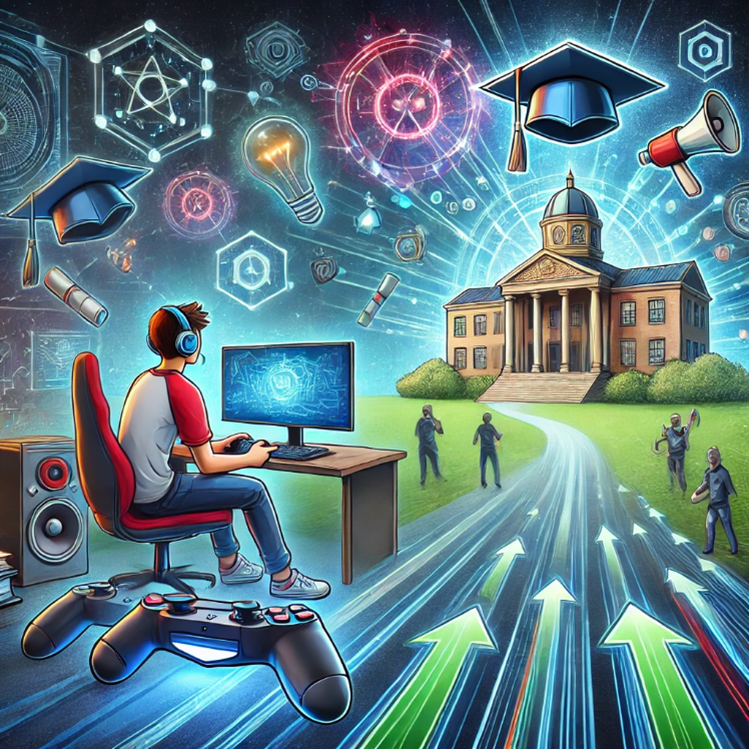
Growth of E-sports Programs: As competitive gaming (e-sports) becomes more popular, high schools and universities are integrating e-sports programs into their curricula, offering scholarships and even full academic pathways for students interested in professional gaming.
Example:The University of California, Irvine (UCI) and Boise State University have e-sports programs offering scholarships and competitive teams. In addition to training students to become professional gamers, these programs often include courses in event management, sports psychology, and game strategy.
Learning Focus:Teamwork, leadership, performance under pressure, communication, business management, sportsmanship, broadcasting, game strategy.
Career Opportunities in E-sports: E-sports is an evolving field, with opportunities not only for players but also for coaches, analysts, broadcasters, and content creators. Students can pursue e-sports management, marketing, and game broadcasting as academic disciplines.
Example:Shawnee State University in Ohio offers an E-sports Management major, providing a comprehensive curriculum that includes event coordination, gaming business development, and live-stream production.
Learning Focus:Business management, marketing, broadcasting, event planning, media production.
4. Virtual Reality (VR) and Augmented Reality (AR) in Gaming and Education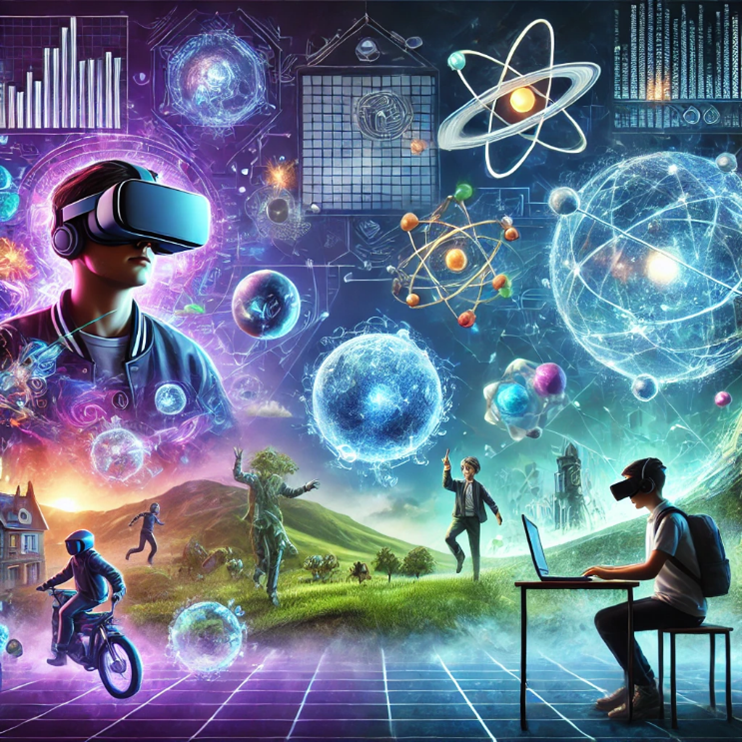
Immersive Learning Environments: The combination of VR and AR in gaming is also opening doors for immersive learning experiences. VR can place students in simulated environments, allowing them to learn and experiment in interactive 3D worlds.
Example:VR platforms like Oculus Quest and HTC Vive are being used in educational institutions to simulate complex scenarios such as lab experiments, virtual field trips, or historical events. Students can explore virtual environments and engage with interactive content in ways that were previously impossible.
Learning Focus:Immersive simulations, hands-on learning, problem-solving, and spatial awareness.
Augmented Reality for Game-Based Learning: AR in gaming is used to enhance educational experiences by superimposing digital content on the physical world. Pokemon Go is a popular example of an AR game that encourages outdoor activity and can teach students about geography, ecology, and teamwork.
Example:AR-based educational apps are being used in classrooms to teach anatomy, physics, and even language arts, combining game-like elements with real-world interaction.
Learning Focus:Spatial thinking, creativity, interaction, and augmented learning environments.
5. Artificial Intelligence (AI) and Machine Learning in Gaming
AI for Game Design and Development: AI is revolutionizing game design, allowing for more dynamic, intelligent, and responsive game environments. As AI tools improve, students can learn how to design game AI, including developing more complex non-playable characters (NPCs), procedural content generation, and adaptive learning environments.
Example:AI is used to create more realistic enemy behavior and more immersive storylines in games, helping students understand the algorithms and decision-making processes behind AI.
Learning Focus:AI algorithms, game development, machine learning, procedural generation.
Data Analysis and Personalization: AI also plays a role in analyzing player data to personalize gaming experiences, such as adjusting difficulty levels or tailoring in-game purchases based on user behavior. Students can learn how big data and predictive analytics are used in the gaming industry to optimize gameplay and monetization strategies.
Example:Platforms like Steam and Epic Games Store use AI to recommend games based on player preferences and past behavior.
Learning Focus:Data science, AI programming, analytics, recommendation systems.
6. Cloud Gaming and Accessibility
Democratizing Gaming:Cloud gaming, where games are streamed over the internet rather than requiring a high-performance console or PC, is breaking down barriers to entry for students. Cloud gaming allows students from diverse backgrounds to access high-quality games without the need for expensive hardware.
Example:Google Stadia, NVIDIA GeForce Now, and Xbox Cloud Gaming allow gamers to play cutting-edge titles on devices as simple as smartphones or low-spec PCs.
Learning Focus:Cloud computing, streaming technologies, networking, and virtualized environments.
Online Multiplayer Education Games: Cloud-based gaming also facilitates multiplayer online games, which can be used for educational purposes. These games can teach students collaboration, communication, and strategic thinking through team-based gameplay.
Example:Minecraft Education Edition is a cloud-based multiplayer platform used to teach subjects such as mathematics, history, and coding.
Learning Focus:Collaboration, team dynamics, problem-solving, programming, and digital citizenship.
7. Creating an E-sports Ecosystem
Educational Resources for Game Design and Streaming: The growing e-sports industry has created a need for a variety of educational resources and tools. Game developers, streamers, and content creators can find courses or certifications to further their expertise, providing academic pathways in streaming and content creation.
Example:Online platforms like Udemy, Coursera, and LinkedIn Learning offer courses on game design, coding, e-sports broadcasting, and social media marketing for the gaming world.
Learning Focus:Digital media, content creation, marketing, programming, live-streaming, e-sports broadcasting.
Conclusion
Tech innovation is not only making gaming more accessible but is also opening new academic opportunities in the fields of game design, e-sports, AI, VR/AR, and cloud gaming. Through specialized programs, gamified learning, and emerging technologies, students can now explore gaming as both a career pathway and a tool for enhancing educational experiences. The intersection of gaming and academia provides a dynamic and engaging way for students to gain essential skills, from creativity and critical thinking to technical expertise in programming and design. As the gaming industry continues to grow, so too will the academic opportunities, preparing the next generation of innovators, game developers, and e-sports professionals.


